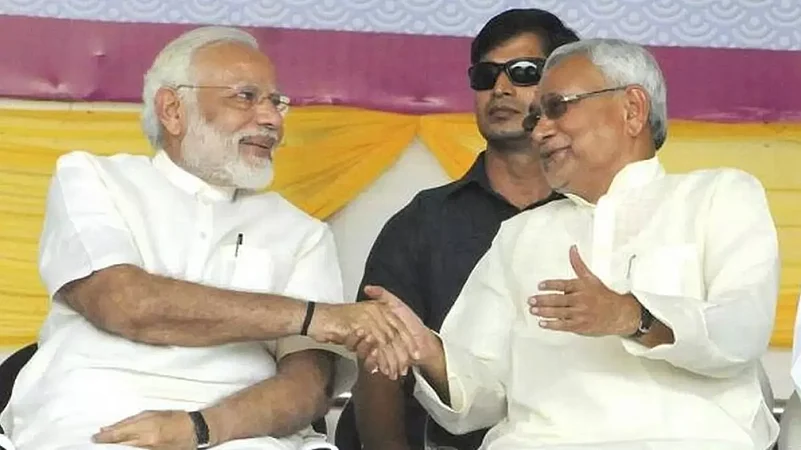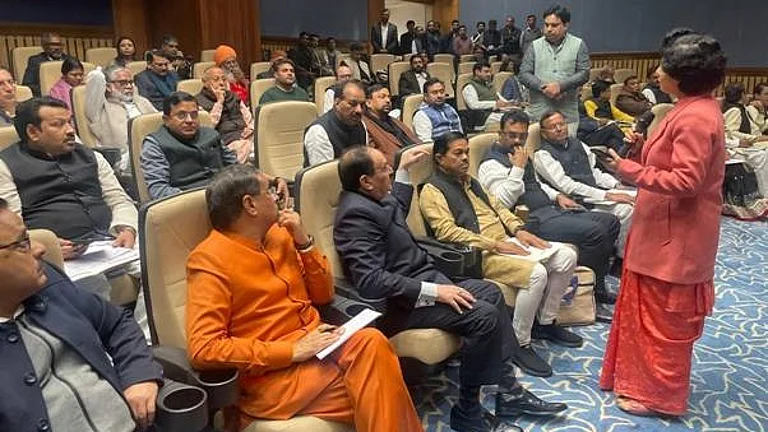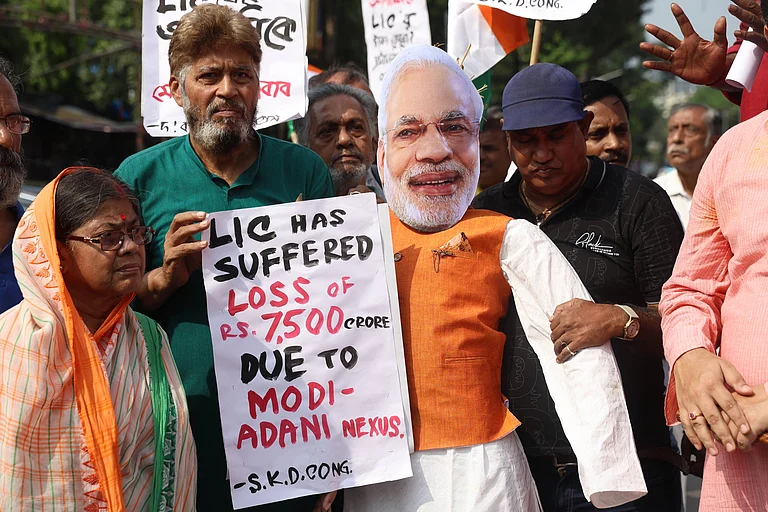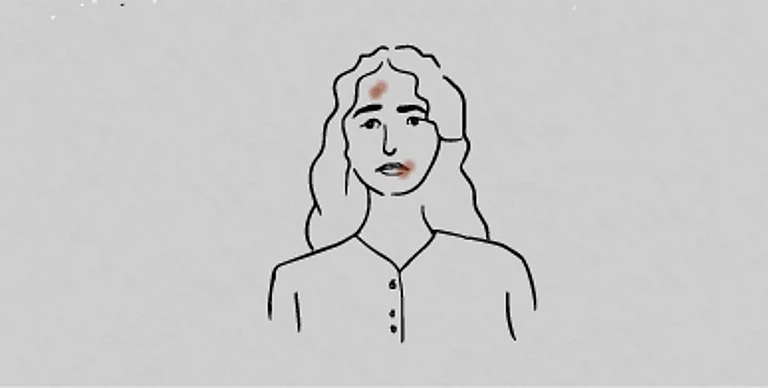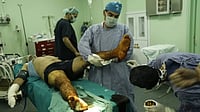For a long time, the words bimaru (sick), gareeb (poor), and pichhda (backward) have been associated with Bihar in political rhetoric. It suits the political narrative as promises are made around this image. Chief Minister Nitish Kumar often presses his demand to the central government to allot ‘special status’ to Bihar citing poverty, lack of industries, etc.
But, the latest figures released by the central government show that Bihar has taken a big leap in exiting a large population from the clutches of poverty.
According to a NITI Aayog report titled ‘National Multidimensional Poverty Index — A Progress Review 2023’, Bihar’s population of multidimensional poor has declined drastically and it is the highest among any other state.
According to the report, as per the National Family Health Survey (NFHS)-4, 51.9 per cent of Bihar’s total population was multidimensionally poor, which has come down to 33.8 per cent, that is, there has been a decrease of 18.1 per cent. If we talk in numbers, then about 22.5 million (2.25 crore) people have come out of multidimensional poverty.
Multidimensional poverty is assessed on the basis of several developmental indicators like the availability of nutritious food to the population, child and adolescent mortality, maternal health, attendance of children in schools, access to cooking fuel, sanitation, the availability of drinking water, electricity, housing, bank accounts and assets.
According to the NITI Aayog report, nutrition, maternal health, schooling, availability of cooking fuel, sanitation and the availability of housing have played a big role in reducing multidimensional poverty. These indicators have improved drastically which helped in taking a large population out of poverty.
In reducing multidimensional poverty by 18.1 per cent, the participation of nutrition is 27.9 per cent, maternal health is 13.1 per cent, schooling is 18.3 per cent, school attendance is 8.9 per cent, cooking fuel is 8.5 per cent, housing is 8.8 per cent and sanitation is 7.4 per cent, says the report.
The report further states that in 2015-16, 51.8 per cent of Bihar’s population was deprived of nutrition, which decreased to 42.2 per cent in 2019-2021. Similarly, in 2015-16, 45.6 per cent of the population was deprived of maternal health, which came down to 37.2 per cent in 2019-21. In 2015-16, 82.9 per cent of Bihar’s population was deprived of cooking fuel, but in the year 2019-21, 63.3 per cent of the population was deprived of it.
A lot of improvement is also visible on the sanitation front. In 2015-16, 73.5 per cent of Bihar’s population was deprived of sanitation, but now 50.8 per cent of the population is deprived of it.
A remarkable improvement happened in terms of access to drinking water, electricity supply and banking services as well. In 2015-16, 2.1 per cent of the population was deprived of drinking water, but now water is non-accessible to only 1.6 per cent of the population. Earlier, 39.7 per cent of the population did not have access to electricity, but now such a population has come down to 3.7 per cent. At the same time, earlier 26 per cent of the population was unable to take advantage of banking services, but now such population is only 3.9 per cent, according to the report.
The Bihar Economic Survey-2022-23 report has some data to support this development.
Bihar Economic Survey-2022-23 says that the Bihar government increased the budget for nutrition under Integrated Child Development Services (ICDS) by 9.7 per cent annually.
In the energy sector, Bihar Economic Survey statistics show that in 2017-18, the peak demand was 4,965 MW (mega watt) in the state and the supply was 4,535 MW. In 2021-22, the peak demand reached 6,475 MW and the supply increased to 6,627 MW.
Data also shows an increase in electricity connections. There were 110.2 lakh consumers in 2017-2018, which increased to 179.2 lakh in 2021-22.
In 2015-16, a total of Rs 1,12,328 crore was spent on social services, health and education, which increased to Rs 1,93,122.97 crore in the year 2020-21, the Economic Survey report says.
As the data was released, both the opposition parties, the BJP and the ruling party, JDU, rushed to take credit for it.
State finance minister Vijay Kumar Chaudhary said: “A lot of development work has been done in the state under the leadership of Nitish Kumar. A lot of development work was done, especially in rural Bihar, due to which poverty has decreased significantly.”
Chaudhary added that according to the figures published, the national average poverty reduction is 9.89 percent but in Bihar, the reduction is 18.13 percent, which is highest among all the states.
Another Bihar minister Bijendra Yadav attacked the Modi government for not giving the state the ‘special status’. He said: “By not giving us the status of special state, Rs 92,000 crore were deducted. What a big injustice it is!”
In response, senior BJP leader and former deputy chief minister Sushil Kumar Modi said: “Bihar got Rs 5.22 lakh crore more in the last nine years during the NDA government, compared to the 10 years regime of the UPA. Though, it is another issue that the state lost Rs 50,000 crore due to liquor ban policy of Nitish Kumar.”
“Bihar also got Rs 2.50 lakh crore more as central tax during NDA compared to UPA. Bihar was given Rs 1.81 lakh crore more money during NDA compared to UPA. Should Bihar ministers tell how Bihar was deprived of funds? First time after independence, PM Narendra Modi increased the state’s share in central taxes by 10 per cent. This has helped backward states like Bihar,” he added.
Economists attributed the improvement in Bihar’s figures to the joint efforts of the central and state governments.
“There has been a lot of improvement in Bihar in the sectors of health, education, drinking water availability, sanitation etc. But the credit for this does not go only to the Bihar government, but the central government also has a role in it. Many schemes have financial assistance from the central government, so this reform cannot be called an effort of the Bihar government alone,” says Patna-based economist Nawal Kishore Chaudhary.
However, despite the improvement in the multidimensional poverty figures, Chaudhary believes that it will take a long time to remove the poverty tag stuck on Bihar.
He says, “There is no doubt that this is a significant improvement for Bihar, but these figures cannot change the fact that Bihar is still a backward state. Despite the decrease in the statistics of multidimensional poverty, distress migration is still taking place. The pace of industrialisation in Bihar is significantly slow, agricultural production is very low. Bihar is still far behind in terms of quality health, education and employment and other developmental sectors Bihar has a long way to go to shed the tag of a poor and backward state.”







